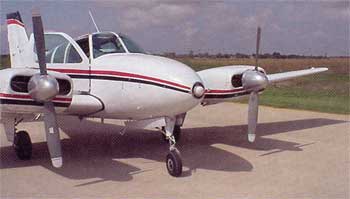|
Air Force Research Laboratory (AFRL) scientists
assigned to the Fuze Air-to-Surface Technology (FAST)
program are developing the next-generation fuze sensor
for use with blast/fragment, penetrating, low-collateral-damage,
and agent-defeat unitary warheads. They designed the FAST
fuze sensor with the capability to determine its height
above the ground contour regardless of the target and
background structure in order to minimize error from the
height-of-burst (HOB) selection.
The goal of the FAST program is to provide
the warfighter with a precision HOB ground-profiling and
foliage-penetrating fuze sensor in two distinct and versatile
forms:
(1) an upgrade for the DSU-33B/B proximity
fuze sensor in a nose-mounted configuration, to support
the Targets Under Trees program
(2) a tail-mounted configuration for
other program programs.
The modes of operation for the FAST sensor
are selectable HOB, near-surface burst, and ground impact
initial condition (impact time and velocity) indication.
The fuze sensor will accurately operate in weapon systems
with 50-2500 m/s closing velocities. Scientists also designed
the FAST sensor to resist electromagnetic counter-measures
and electromagnetic interference environments and to operate
in adverse weather and under other battlefield-obscuring
conditions, yet still be affordable.
They used commercial, off-the-shelf components
in designing the wideband radio frequency (RF) transceiver
to keep costs low.
 |
| Test
aircraft with sensor installed in nose headlamp |
The laboratory recently evaluated the
FAST proximity sensor breadboard in real-world conditions
using tower tests and low-speed captive flight tests (CFf).
Engineers performed the tests to qualitatively assess
launch-to-burst simulation validity and design location
parameters, and to identify any necessary system changes
prior to building the first electronics boards for the
DSU-33 B/B upgrade. The test team chose a Beechcraft Baron
(at right) twin-engine aircraft for the CFT platform.
The nose headlamp proved to be the ideal location for
mounting the FAST nose-mount antenna. The team cabled
the antenna to the breadboard electronics (RF and digital)
in the aircraft and used a portable computer to control
the fuze and collect data (see below).
 |
| FAST
breadboard electronics during CFT |
They conducted the CFTs with FAST operating
in various modes and over a variety of terrain (including
foliage and water). The test results indicated a good
match between the CFT data and high-fidelity simulations.
Engineers will also use the test data to further develop
the FAST proximity sensor algorithms.
With the successful completion of the
CFTs, the FAST program took an important step towards
transitioning the next generation of proximity fuze sensors.
Increased weapon lethality is required
as weapons development moves towards smaller weapons and
operations demand one weapon per target. FAST provides
the precise sensing capabilities to significantly improve
both the lethality and the versatility of air-to-surface
weapons.
|